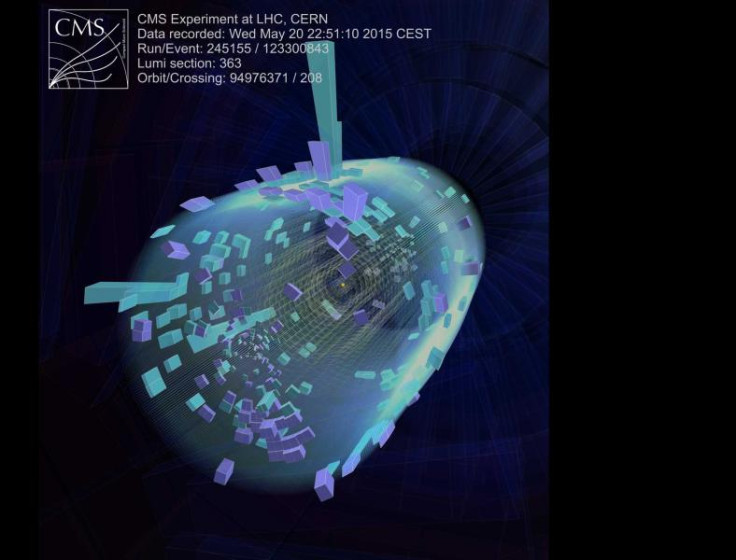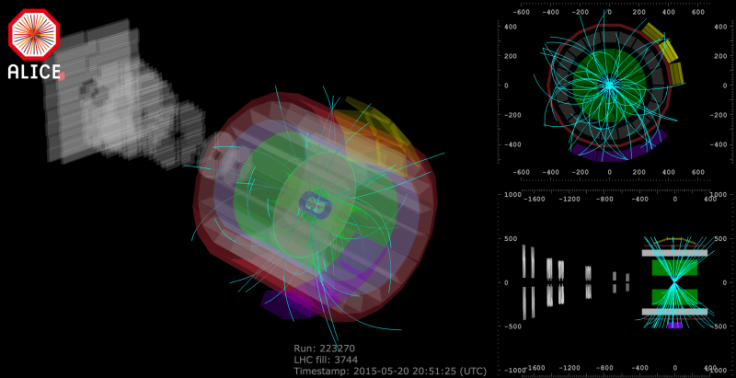LHC: Boldly going where no experiment has gone before, as collision energy touches new record

The wait for something new and totally unexpected in the world of physics just got shorter with the accelerator at Cern sending beams of protons colliding at incredibly high energy.
Cern released images of particle showers on Thursday following collisions of proton beams at never-seen-before energy of 13 trillion electronvolts.
The energy of the collisions was a mere eight trillion ev during the LHC's first run, which ended in early 2013.
The two opposing beams of protons were steered into each other at the four collision points spaced around the LHC's tunnel as part of a testing process to tune systems like collimators that protect the machine and detectors from particles that stray from the edges of the beam.
Colliding beams will stay in the LHC for several hours allowing the operations team to monitor beam quality and optimisation of the set-up.
The LHC Operations team hopes to declare "stable beams" in the coming weeks after which the experiments will begin exploring physics at the new energy frontier, said a Cern statement.
"We begin by bringing the beams into collision at 13 TeV, and adjusting their orbits to collide them head-on," says Ronaldus SuykerBuyk of the Operations team.
It was last month that the proton beams were back in the accelerator following two years of intense maintenance and consolidation.
The first beam at the record energy of 6.5 TeV and the first collisions at the lower beam energy of 450 gigaelectronvolts (GeV) allowed the team to check and fine-tune all the beam instruments, magnets and collimators along the 27-kilometre accelerator for collisions at 900 GeV.
But as beam energy increases the beam parameters and orbits change significantly. With the beams focused down to a much smaller spot size the location of collisions also changes.
This requires more scanning and adjustments of orbits to ensure collisions, said Jorg Wenninger of the LHC Operations team.
As Dan Tovey, a physics professor at the University of Sheffield who works on the LHC's Atlas experiment, told BBC, the change in energy calls upon teams to "re-learn" how to run their detectors.
"We know how everything worked back in 2012, but a lot has changed since then, both with the machine and with the experiments as well," Prof Tovey said.
The design of the LHC allows more than 2800 bunches of protons to circulate in each beam at a time. But for now the collision tests will see just one or two bunches per beam.
"When the positioning of all collimators has been validated the LHC will switch over to production mode," says Wenninger. This is expected in June.
"When you accelerate the beams, they actually get quite a lot smaller - so the act of actually getting them to collide inside the detectors is really quite an important technical step," Prof David Newbold told BBC News. Prof Newbold, from the University of Bristol, works on the CMS experiment.
"13 TeV is a new regime - nobody's been here before."
Newbold points to the high number of collisions per second at LHC, which is higher than any other accelerator in history.
"The reason for that is - like the Higgs boson last time - what we're principally looking for is incredibly rare decay particles. And the more collisions you have per second, the more chance you have of finding something that's statistically significant."
The expectations are high regarding the outcome of the collisions.
As Tovey put it, "the best thing that could possibly happen is that we find something that nobody has predicted at all. Something completely new and unexpected, which would set off a fresh programme of research for years to come."

© Copyright IBTimes 2025. All rights reserved.





















